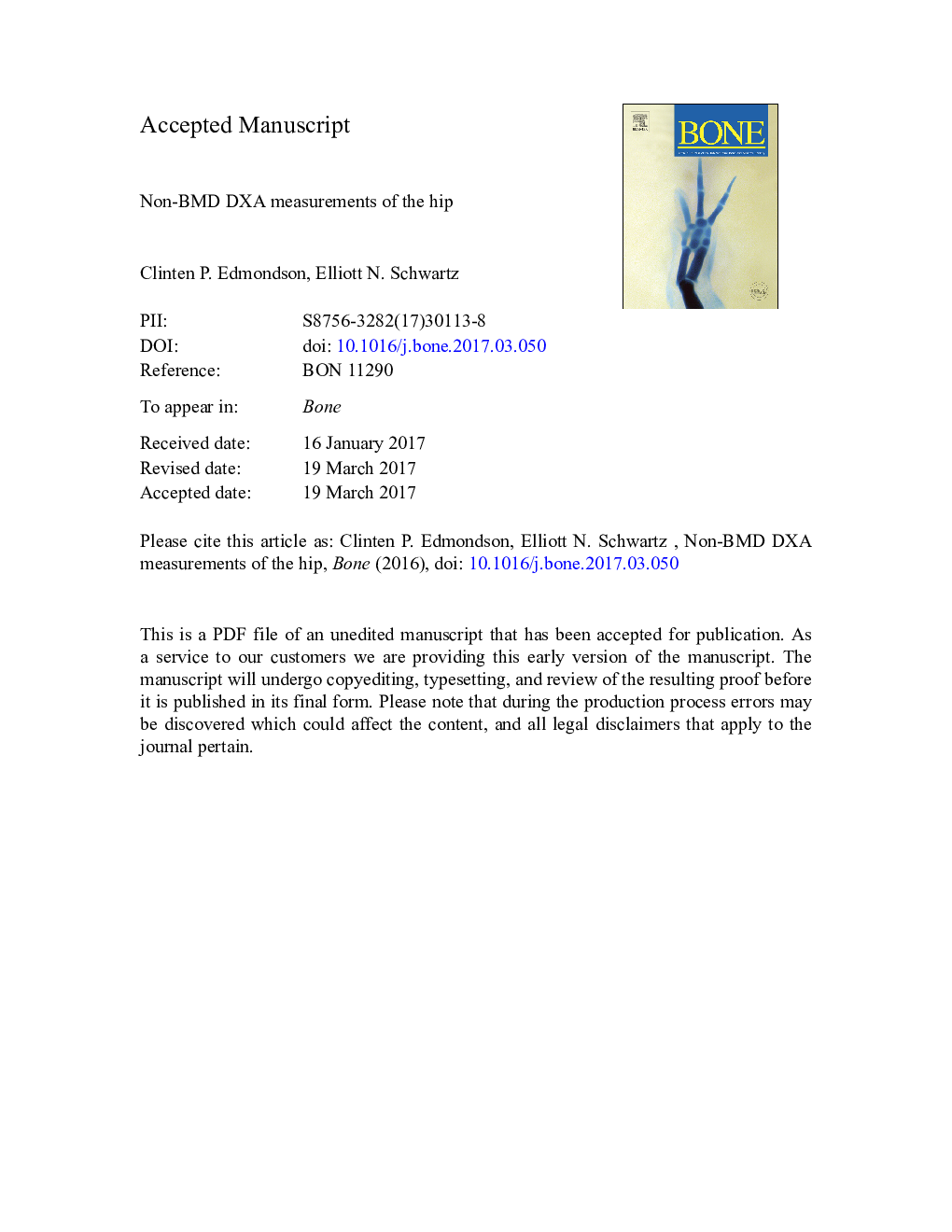| Article ID | Journal | Published Year | Pages | File Type |
|---|---|---|---|---|
| 5585242 | Bone | 2017 | 30 Pages |
Abstract
Hip fracture is one of the most serious complications of osteoporosis. More than 50% of hip and other fractures occur in patients without densitometric osteoporosis. Therefore, areal bone mineral density (aBMD) may not be the best way to assess fracture risk. In order to improve assessment of fracture risk, many other approaches have been taken. At the present time, the Fracture Risk Algorithm (FRAX©) is one of the most notable ways to improve assessment of fracture risk. However, since early in the initiation of the dual energy x-ray absorptiometry (DXA) era, several non-BMD DXA approaches to the assessment of hip fracture risk have been proposed. This review will cover some of those methodologies, including hip-axis length (HAL), hip-structural analysis (HSA), finite element analysis (FEA) by DXA, and body composition of the thigh by DXA (BCT). These methods have been utilized in models of hip fracture occurrence and in pharmacological clinical trials. How they should be used in clinical practice or if they should be used in clinical practice is more of an issue. In addition, we will discuss the recent proposal of the use of Long Femur Scan Field in the effort to diagnose atypical femoral fractures.
Keywords
Related Topics
Life Sciences
Biochemistry, Genetics and Molecular Biology
Developmental Biology
Authors
Clinten P. Edmondson, Elliott N. Schwartz,
